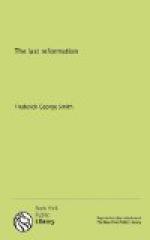[Sidenote: Testimony of commentators]
Many commentators, even Protestant commentators, have been frank enough to admit the real application and force of these symbols of Revelation as applying to both Catholicism and Protestantism. Auberlen asserts that “‘harlot’ means, in the Old and New Testaments, the apostate church of God.”—Prophecies of Daniel and the Revelation, p. 278. Again, he says, “Not simply Rome, but Christendom as a whole, even as Israel as a whole, has become a harlot. The true believers are hidden and dispersed.”—Ibid., p. 290. While it may not be exactly in accordance with the Scriptures to speak of the true church of God as being apostate, yet in a sense it is true, for a large part of those who originally constituted the church of God actually did apostatize, until a false church assumed almost universal sway and divers forms of error prevailed, practically eclipsing, for a long period, the true church of God on earth. Auberlen stated his conclusion in these words: “Notwithstanding the universal character of the harlot, it remains true that the Roman and Greek churches are in a more peculiar sense the harlot than the Evangelical Protestant.”—P. 294.
In the well-known Commentary by Jamieson, Fausset, and Brown, the Rev. A.R. Fausset, writing on Rev. 17:2, says of the harlot: “It can not be Pagan Rome but Papal Rome, if a particular seat of error be meant, but I am inclined to think that the judgment (chap. 18:2) and the spiritual fornication (chap. 18:3), though finding their culmination in Rome, are not restricted to it, but comprise the whole apostate church—Roman, Greek, and even Protestant, so far as it has been seduced from its ‘first love’ to Christ, the heavenly Bridegroom, and given its affections to worldly pomps and idols.”
William Kincaid, in Bible Doctrine, p. 249, says: “I think Christ has a true church on earth, but its members are scattered among the various denominations, and are more or less under the influence of mystery Babylon and her daughters.”
Alexander Campbell said: “The worshiping establishments now in operation throughout Christendom, increased and cemented by their respective voluminous confessions of faith, and their ecclesiastical constitutions, are not churches of Jesus Christ, but the legitimate daughters of that mother of harlots, the Church of Rome.”
Lorenzo Dow says of the Romish Church: “If she be the mother, who are the daughters? It must be the corrupt, national, established churches that came out of her.”—Dow’s Life, p. 542.
Again, Hahn in Auberlen says: “The harlot is not Rome alone (though she is preeminently so), but every church that has not Christ’s mind and spirit. False Christendom, divided into very many sects, is truly Babylon, i.e., confusion.”




